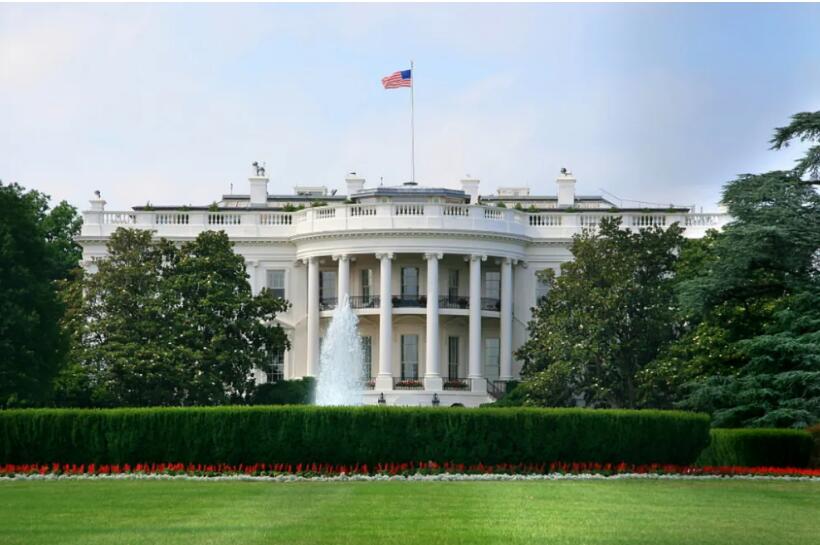TMTPOST -- U.S. Treasury Secretary Scott Bessent sees the government could wrap up most trade talks in less than two months, according to a recent report.

Credit:China Central Television
The U.S. expects to largely complete negotiations with countries that have yet to secure a trade deal by the end of October, Nikkei Asia reported on Monday, citing Bessent in an interview with Nikkei on Thursday. Thursday, or August 7, is the effective date of U.S. President Donald Trump’s worldwide reciprocal tariffs.
Trump on July 31 signed an executive order to modify reciprocal tariffs on dozens of countries, with the tariff rates ranging from 10% to 41%. Most of the updated duties the countries are subject to were brought down compared with the original ones Trump announced on April 2, a date the president proclaimed “Liberation Day”.

While Trump in a social media post on July 30 stressed the August 1 deadline for tariffs “stands strong” and will not be extended, his tariff modifications would come into effect on 7 days after the date of the executive order. A White House official told CNBC-TV 18 in a statement that the latest effective date “should not be read as an extension, but to give [the U.S.] Customs and Boarder Protection ample time to implement these [tariffs].”
Through the modification, Trump maintained a baseline minimum rate of 10% across all trading partners, according to the order released by the White House on Thursday. Syria has the highest rate at 41%. Laos and Myanmar were hit with 40% tariffs. Switzerland is another loser as Trump lifted the 31% reciprocal tariff rate from 31% to 39%. Falkland Islands became a trading partner with the lowest tariff rate of 10% among the announced list. The country in the South Atlantic Ocean originally faced a 41% tariff.
15% emerged as a most popular tariff rate since the Trump administration set a 15% tariff rate for the European Union and 27 countries including Angola, Botswana, Cameroon, Chad, Côte d`Ivoire, Democratic Republic of the Congo, Equatorial Guinea, Fiji, Guyana, Israel, Japan, Jordan, Lesotho, Liechtenstein, Madagascar, Malawi, Mauritius, Mozambique, Namibia, Nauru, Nigeria, North Macedonia, South Korea, Uganda, Vanuatu, Zambia, Zimbabwe.
More than a dozen countries would pay tariffs higher than 15%. Those countries have among the highest trade deficits with the U.S., CNN cited an official. Six countries including Cambodia, Indonesia, Malaysia, Pakistan, Philippines and Thailand will face a 19% tariff. Bangladesh, Sri Lanka, Taiwan and Vietnam will see a 20% U.S. tariff from August. U.S. imports from Brunei, India, Kazakhstan, Moldova and Tunisia are subject to a 25% tariff. Bosnia and Herzegovina and Libya are facing a 30% tariff, and the tariffs rate for Iraq and Serbia is 35%.
Some countries, including Switzerland, Canada, and Mexico, are still working toward better terms.
Trump on July 31 signed an executive order increasing the tariff on Canada from 25% to 35%, with the higher tariff set to go into effect on August 1. "Canada has failed to cooperate in curbing the ongoing flood of fentanyl and other illicit drugs, and it has retaliated against the United States for the president's actions to address this unusual and extraordinary threat to the United States," the White House said the fact sheet.
Trump on July 31 said in a social media post that he agreed to extend the current tariffs on Mexico for 90 days after a “very successful” phone call with Mexican President Claudia Sheinbaum. The extension means the current tariffs on U.S. imports from Mexico will maintain beyond the August 1 deadline for higher reciprocal tariffs.
“Mexico will continue to pay a 25% Fentanyl Tariff, 25% Tariff on Cars, and 50% Tariff on Steel, Aluminum, and Copper,” Trump wrote in the post on his platform Truth Social, adding that “Mexico has agreed to immediately terminate its Non Tariff Trade Barriers, of which there were many.”
The decision to grant a 90-day reprieve was made considering complexity of an agreement with Mexico, according to Trump. He suggested the extension of current tariff rates for Mexico will allow for more time for negotiations. “We will be talking to Mexico over the next 90 Days with the goal of signing a Trade Deal somewhere within the 90 Day period of time, or longer,” he said.
Trump said a group of senior officials also joined the call meeting, including U.S. Vice President JD Vance, Bessent, Commerce Secretary Howard Lutnick, Secretary of State Marco Rubio, U.S. Trade Representative Jamieson Greer, Chief of Staff Susie Wiles and Chief of Staff for Policy, and United States Homeland Security Advisor Stephen Miller. He also said U.S. and Mexico will continue cooperation on the border issue to address concerns over drugs, drug distribution and illegal immigration into the U.S.
更多精彩内容,关注钛媒体微信号(ID:taimeiti),或者下载钛媒体App

